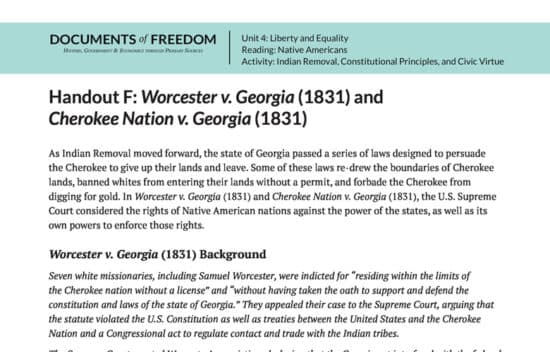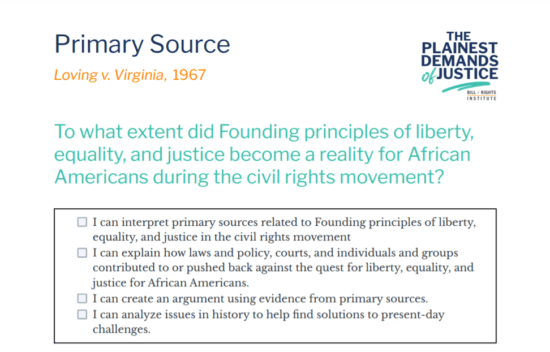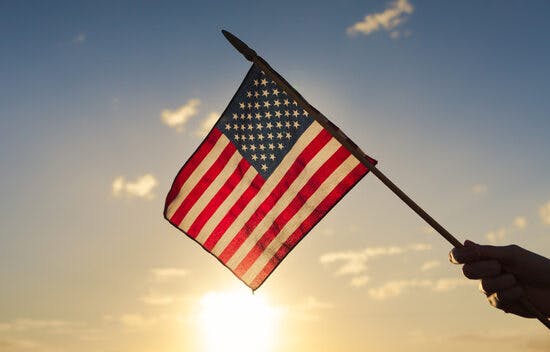



Required Court Cases
28 items
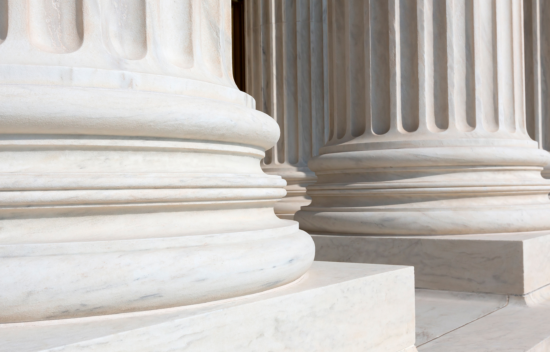
Marbury v. Madison (1803)
Lesson - 4 Activities
Lesson
4 Activities
Case background and primary source documents concerning the Supreme Court case of Marbury v. Madison. Setting the precedent of Judicial review, this lesson focuses on the question of whether or not the Supreme Court should have the power to overturn unconstitutional federal laws.
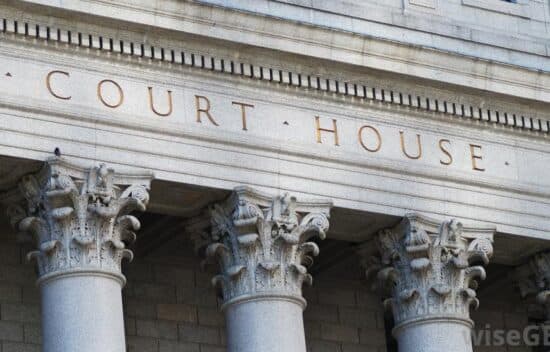
McCulloch v. Maryland (1819)
Lesson - 4 Activities
Lesson
4 Activities
Case background and primary source documents concerning the Supreme Court case of McCulloch v. Maryland. Dealing with the Constitution's Necessary and Proper Clause, this lesson asks students to asses to what extent the Necessary and Proper Clause grants a new power to Congress and what is the meaning of "proper" in this context.
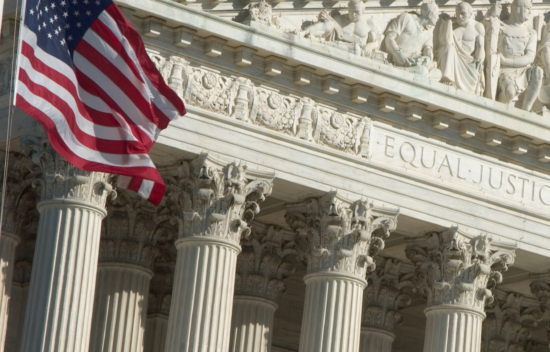
Dred Scott v. Sanford (1857)
Lesson - 3 Activities
Lesson
3 Activities
Case background and primary source documents concerning the Supreme Court case of Dred Scott v. Sanford. This case deals with the issues of slavery, states’ rights, and the interpretation of our Founding documents. This lesson focuses on the question of how the two sides in the Dred Scott decision interpreted the same Founding documents and came to such different conclusions.

Plessy v. Ferguson (1896)
Lesson - 4 Activities
Lesson
4 Activities
Case background and primary documents concerning Plessy v. Ferguson. Dealing with the principle of Equal Protection, this lesson asks students to evaluate the degree to which custom, precedent, and understanding of federalism informed the ruling in the case.

Schenck v. United States (1919)
Lesson - 4 Activities
Lesson
4 Activities
Case background and primary source documents concerning the Supreme Court case of Schenck v. United States. Dealing with the First Amendment's free speech protections and whether it has limits during wartime, this lesson asks students to evaluate the Supreme Court's limitations of free speech set forth in Schenck.

Korematsu v. U.S. (1944)
Lesson - 4 Activities
Lesson
4 Activities
Case background and primary source documents concerning the Supreme Court case of Korematsu v. United States. Dealing with President Franklin Roosevelt's Executive Order 9066 and the relocation of Japanese Americans during World War II, this lesson asks students to assess the Supreme Court's decision in Korematsu v. United States.
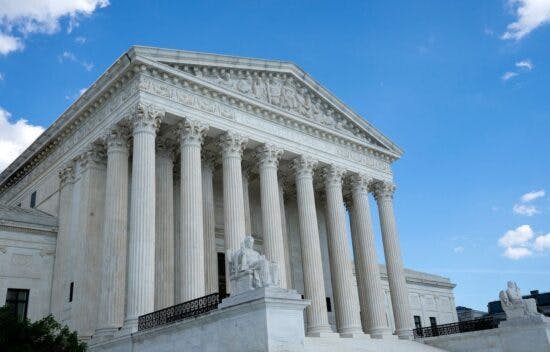
Brown v. Board of Education (1954)
Lesson - 4 Activities
Lesson
4 Activities
Case background and primary source documents concerning the Supreme Court case of Brown v. Board of Education. Dealing with the principle of Equal Protection, this lesson asks students to assess the role played by the Court as the protector of individual rights against the tyranny of the majority.

Baker v. Carr | Homework Help from the Bill of Rights
Video
Video
5 Min
In this Homework Help video, learn the story of the landmark Supreme Court case of Baker v. Carr. The case explores the question of a state’s right to control electoral lines otherwise known as gerrymandering.
The case ruling concluded that the Supreme Court could hear cases pertaining to redistricting because of the Equal Protection Clause in the 14th Amendment through the process of incorporation which argues that states must adhere to the protections of guaranteed in the Bill of Rights. How did the ruling in this case contribute to the democratic principle of “one person-one vote”?
5 Min

Engel v. Vitale | BRI’s Homework Help Series
Video
Video
6 Min
Is school-sponsored prayer in public schools a violation of the establishment clause of the First Amendment? In 1951, some New York schools began starting the day with a non-denominational prayer. This Homework Help video tells the story of the ensuing landmark Supreme Court case of Engel v. Vitale.
6 Min

Engel v. Vitale (1962)
E Lesson
E Lesson
20 Min
The saying goes “as long as there are tests, there will be prayer in schools.” And individual students can indeed pray for straight A’s or for other reasons. But the Supreme Court decision in Engel v. Vitale (1962) held that official recitation of prayers in public schools violated the First Amendment’s Establishment Clause. The ruling is hailed by some as a victory for religious freedom, while criticized by others as striking a blow to the nation’s religious traditions.
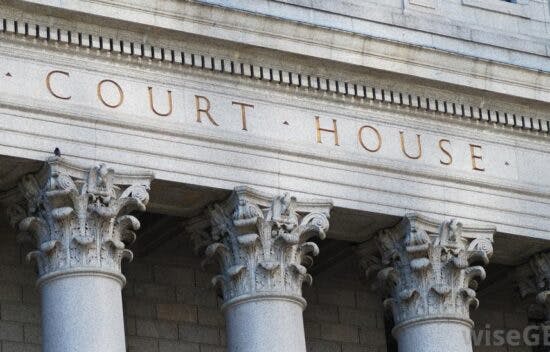
Gideon v. Wainwright (1963)
Lesson - 4 Activities
Lesson
4 Activities
Case background and primary source documents concerning the Supreme Court case of Gideon v. Wainwright. Dealing with whether or not a state must provide a lawyer to the accused, this lesson asks students whether or not they believe the Sixth Amendment guarantees the right to counsel in all cases and whether the government must provide a lawyer to defendants who want one but cannot afford one.

Miranda v. Arizona (1966)
Lesson - 4 Activities
Lesson
4 Activities
Case background and primary source documents concerning the Supreme Court case of Miranda v. Arizona. Dealing with the Fifth and Sixth Amendments and whether or not the accused needs to be advised of their rights upon arrest, this lesson asks students to evaluate the extent to which Miranda is the fulfillment of the legal tradition of the promise against self-incrimination.
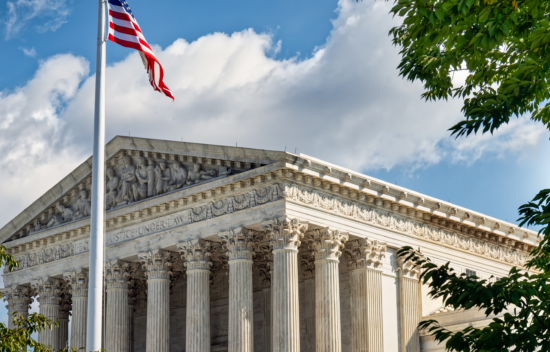
Tinker v. Des Moines (1969)
Lesson - 4 Activities
Lesson
4 Activities
Case background and primary source documents concerning the Supreme Court case of Tinker v. Des Moines. Dealing with students rights and the First Amendment's protection of free speech, this lesson asks students to evaluate the extent to which the First Amendment should protect symbolic speech, and the degree to which that protection should be guaranteed to students in public schools.

New York Times Co. v. United States | BRI’s Homework Help Series
Video
Video
6 Min
How to best balance liberty and security has been a perennial question throughout U.S. history. This Homework Help video explores how the Supreme Court addressed this question in the landmark case of New York Times Co. v. United States.
6 Min

Wisconsin v. Yoder | BRI’s Homework Help Series
Video
Video
6 Min
Religious liberty is one of the foundational principles of American society, but how should it be balanced with government interests in an educated citizenry? Our second Homework Help video of the semester is on the landmark case of Wisconsin v. Yoder, and how the Supreme Court dealt with this important question.
6 Min

Wisconsin v. Yoder (1972) Viewing Guide
E Lesson
E Lesson
Use this viewing guide alongside our Homework Help video.

Roe v. Wade (1973)
Lesson - 4 Activities
Lesson
4 Activities
Case background and primary source documents concerning the Supreme Court case of Roe v. Wade. Dealing with a citizen's Constitutional right to privacy and liberty, this lesson asks students to evaluate the Court's constitutional reasoning in Roe v. Wade.

United States v. Nixon (1974)
Lesson - 3 Activities
Lesson
3 Activities
Case background and primary source documents concerning the Supreme Court case of United States v. Nixon. Dealing with the principle of separation of powers, this lesson focuses on the question of whether or not the Constitution’s separation of powers intended to create an absolute executive privilege.
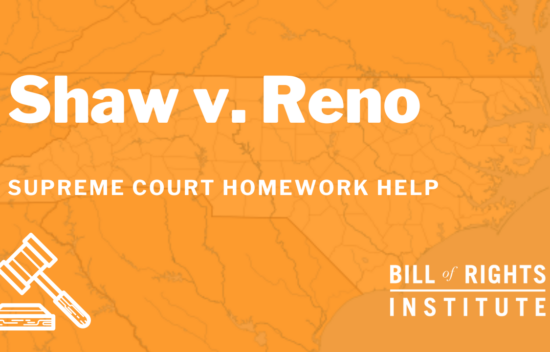
Shaw v. Reno | BRI’s Homework Help Series
Video
Video
5 Min
Can a state draw district lines to increase the voting power of a minority? The Supreme Court took up this question in the 1993 case of Shaw v. Reno. Following the 1962 Baker v. Carr Supreme Court case, which ruled that the Supreme Court could hear cases on gerrymandering because of the Equal Protection Clause in the 14th Amendment through the process of incorporation, Shaw v. Reno challenged the constitutionality of gerrymandering based on race. Check out our latest Homework Help video on this AP Government required Supreme Court case!
5 Min
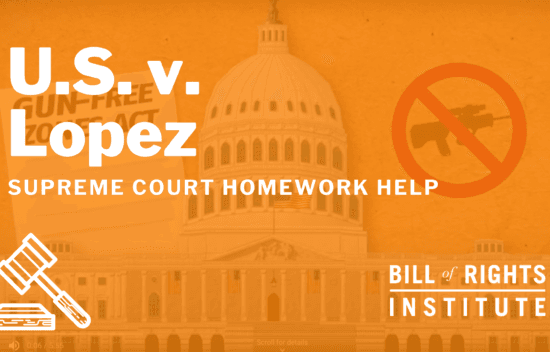
U.S. v. Lopez | BRI’s Homework Help Series
Video
Video
6 Min
This Homework Help narrative explores the landmark case of U.S. v. Lopez and its lasting impact on federalism. Students will study the topic of federal power and street crime while forming their own opinions on the merits of the case.
6 Min

United States v. Lopez (1995)
E Lesson
E Lesson
20 Min
What are the limits of Congress’s power under the Commerce Clause? This question was taken up by the Supreme Court in the case of U.S. v. Lopez. This lesson explores the case and its relationship to Federalism.

Bush v. Gore (2000)
Lesson - 4 Activities
Lesson
4 Activities
Case background and primary sources concerning the Supreme Court case of Bush v. Gore. Dealing with the 2000 election, this lesson asks students whether or not they think the United States Supreme Court correctly decided the case.
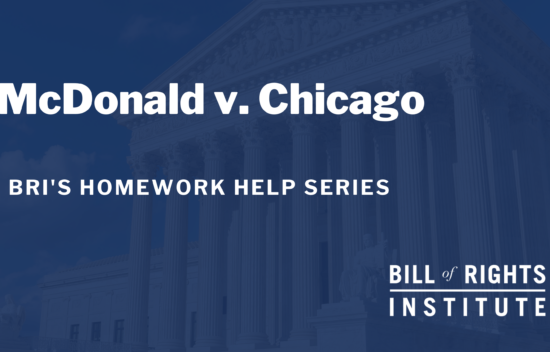
McDonald v. Chicago | Homework Help from the Bill of Rights Institute
Video
Video
4 Min
Does the Second Amendment prevent a city from effectively outlawing handgun ownership? In 2008, Otis McDonald attempted to purchase a handgun for self-defense purposes in a Chicago suburb. However, the city of Chicago had banned handgun ownership in 1982 when it passed a law that prevented issuing handgun registrations. McDonald argued this law violated the Fourteenth Amendment’s Privileges and Immunities Clause as well as the Due Process Clause. In a 5-4 decision, the Court ruled that McDonald’s Second Amendment right to bear arms was protected at the state and local level by the Due Process Clause of the Fourteenth Amendment.
4 Min

Citizens United v. F.E.C. (2010)
Lesson - 5 Activities
Lesson
5 Activities
Case background and primary source documents concerning the Supreme Court case of Citizens United v. F.E.C. Dealing with free speech in the political arena, this lesson asks students to asses whether or not the Supreme Court ruled correctly in Citizens United in light of constitutional principles including republican government, freedom of speech, and property rights.
